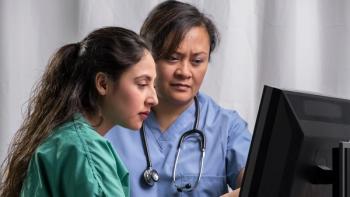
- February 2021
- Volume 15
- Issue 1
Oncology Nurses Can Help Prevent the Preventable

Oncology nurses can play a key role in the prevention of certain cancers.
The World Health Organization estimates that 30% to 50% of cancer cases are preventable, and usually people think this means modifying health behaviors such as not smoking tobacco, maintaining a healthy body weight, getting regular physical activity, limiting alcohol, and eating a healthily.1
But there are additional ways to prevent cancer, including risk-reducing surgical procedures, screening, and early detection that remove precancerous lesions before they develop into cancer, or medical interventions such as chemoprevention.2
As an oncology nurse working with people who have been diagnosed with cancer, you might not feel that cancer prevention is part of your practice. After all, you might be hanging their chemotherapy, managing their adverse events from radiation therapy, or helping them prepare for their surgical resection. But an oncology nurse can play an incredibly important role in cancer prevention as the patient moves across the cancer continuum.
For example, a woman I worked with as a breast oncology nurse navigator was newly diagnosed and developing a surgical plan for a lumpectomy. She confided that she didn’t understand why this was happening to her since no women had ever been diagnosed with cancer in her family. She had recently learned a few males in her family had been diagnosed with metastatic prostate cancer but hadn’t thought to share this with the oncology team. As an oncology nurse, I understood that metastatic prostate cancer is part of the National Comprehensive Cancer Network criteria for genetic testing,3 and I coordinated with her health care provider a referral for genetic counseling. Her genetic testing came back positive for the BRCA2 pathogenic variant and she felt very overwhelmed when her surgical oncologist recommended bilateral mastectomies.
We discussed the importance of preventing breast cancer in the contralateral breast and connected her to social support services. She did decide to have the bilateral mastectomies.
Later when she was completing her treatment and entering the survivorship phase, we discussed her health care provider’s recommendation for a risk-reducing salpingo-oophorectomy since she had an increased risk of ovarian cancer with the BRCA2 pathogenic variant. In the survivorship care plan, we discussed how colonoscopy and the Pap test are cancer screening tests that can remove precancerous lesions before they develop into cancer.4
We also addressed cancer prevention for her family members by coordinating appointments for them with the genetic counselor.
Oncology nurses can talk to their patients about cancer prevention in the treatment phase as well as the survivorship phase. As trusted members of the health team, nurses are in a unique role to educate patients and their family members on cancer prevention and risk reduction strategies.
References
1. Preventing cancer. World Health Organization. Accessed December 22, 2020.
2. National Cancer Institute. Cancer prevention overview (PDQ)-Health professional version. October 7, 2020. Accessed December 20, 2020.
3. National Comprehensive Cancer Network. Genetic/familial high-risk assessment: Breast, ovarian, and pancreatic (version 2.2021). Accessed December 22, 2020.
4. Cancer screening tests. National Cancer Institute. January 16, 2019. Accessed December 26, 2020. https://www.cancer.gov/about-cancer/screening/screening-tests
Articles in this issue
almost 5 years ago
Cancer Prevention: Why, Who, When, Where, Howalmost 5 years ago
Telehealth: Hope or Hype?almost 5 years ago
COVID-19 Vaccine and Cancer: What Patients Ought to Knowalmost 5 years ago
Adolescent and Young Adult Patients Face Unique Needs, Challengesalmost 5 years ago
Open Discussions Help Nurses Introduce Integrative ServicesNewsletter
Knowledge is power. Don’t miss the most recent breakthroughs in cancer care.































































































